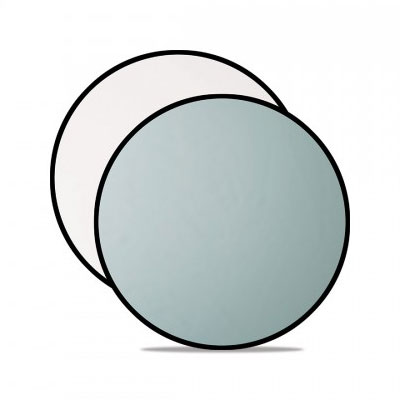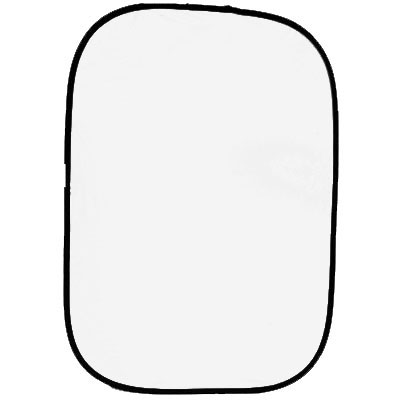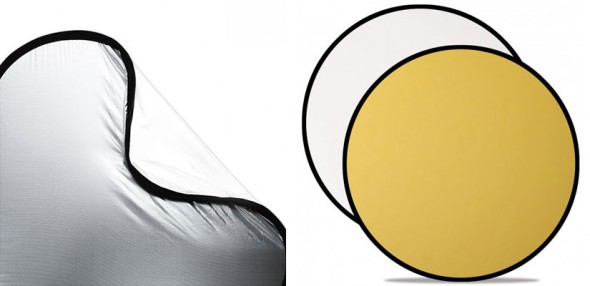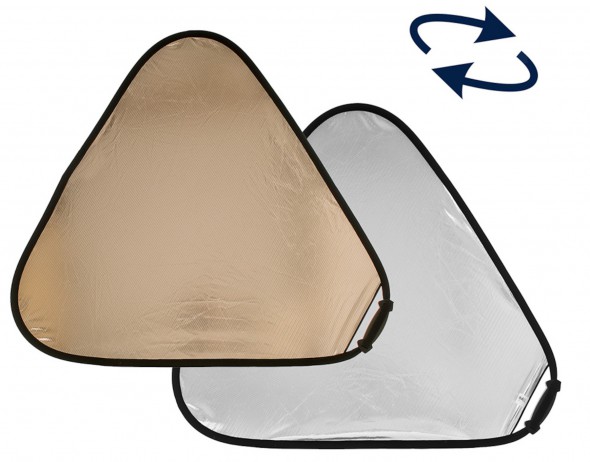Need a reflector? Here's everything you need to consider when buying one

The humble reflector is perhaps the most useful lighting accessory around, and for good reason. Affordable, collapsible, lightweight and easy to transport, reflectors provide an effective way of bouncing light back into a scene.
Reflectors are used across a raft of genres, from portraits and weddings to product and macro photography, and everything in between. You can use them with natural light or alternatively with artificial light from a flash or another source. In essence, they are an additional light that requires no power but delivers plenty.
They couldn’t be easier to use, too; all you do it hold it at an angle that will bounce light in the scene towards your subject, whether you’re trying to fill in the shadows on someone's face or reflect window light into a food or product setup.
Not all reflectors are equal however, and the wide range of options can make selecting the right one for your needs tricky. Here’s what to think about when buying one:
Size
Reflectors come in a range of sizes, from smaller ones you can easily hold with one hand to much larger ones that require greater support. You won’t always need the largest size, although if you’re looking to illuminate portraits down to waist height or something covering a similar area, you may want to go for one of the larger varieties.
Although reflectors are usually round, some are rectangular or triangular. The shape itself isn’t too important; the main thing to think about is whether its size will provide the coverage you require.

Colour
Reflectors are commonly available in white and silver finishes although gold ones are also available. The type to go for depends own what kind of light you want to bounce back into your scene.
A white reflector will result in natural light being bounced back and keep tones as they are without any colour shifts, so this is perhaps the most useful type for most scenes.
A silver reflector, meanwhile, will give a cool reflection with greater contrast than a white one, whereas a gold one will reflect something warmer, which explains why it’s a common choice for portraits.
You don’t just need to opt for one colour, however, as reflectors with different finishes on each side are commonly available. Alternatively, you can buy a set with many different finishes or a reflector that comes with a number of different panels that can be zipped onto a main frame.

How it will be held
Most reflectors are round and have a sturdy frame at their circumference to maintain their shape. These are perfectly suitable for most types of photography, although all but the smallest types require you to hold them with two hands if you are to accurately reflect light into your chosen area.
This usually means that there needs to be a minimum of two people; one to hold the reflector in place and one to operate the camera.
One solution to this is the Lastolite TriGrip, pictured below. This is triangular in shape and has a handle on one corner, which makes it easier to hold in one hand while controlling the camera with another.

Of course, if you do have an assistant at your disposal, they can hold one in each hand to give you even greater control.
Portability
Reflectors collapse down to a much smaller size so they can be transported easily, and they come with a zipped carrying bag for portability.
Be aware that larger reflectors may still be fairly bulky when folded down. Manufacturers usually state the size to which these collapse down, so check this before you buy if you’re going for particularly big model.
About the Author
Matt Golowczynski is a London-based photographer and technical journalist who has written for a range of print and online magazines. For more information and to see more of his work visit his website.

